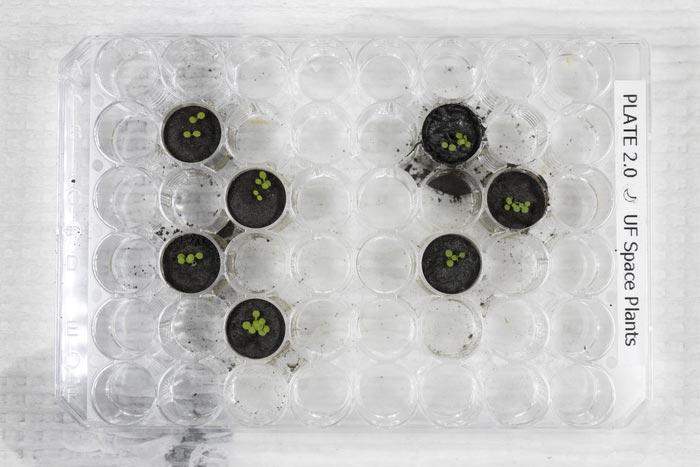Florida scientists first grow plants in lunar soil
- May 16, 2022
- 0
Studies have shown that the soil on the surface of the moon does not interfere with the development of terrestrial plants and does not lead to the formation
Studies have shown that the soil on the surface of the moon does not interfere with the development of terrestrial plants and does not lead to the formation

Studies have shown that the soil on the surface of the moon does not interfere with the development of terrestrial plants and does not lead to the formation of substances harmful to the human body. At the same time, plants perceive regolith as a stressful environment and do their best to adapt to it.
Biologists Anna-Lisa Paul and Rob Ferll said the study took more than 11 years and was associated with a number of challenges. During this time, scientists applied to NASA three times for experiments with lunar soil.
The land the authors wanted was obtained during the Apollo 11, 12 and 17 missions, so it is of great historical significance to the agency. However, last year, NASA still reserved 12 grams — about two teaspoons — of valuable material for trying to grow terrestrial plants.
The proposed amount of soil has forced scientists to develop their own approach to growing organisms. The authors made miniature thimble-sized wells that are commonly used for culturing cells. Then they filled each “pot” with a gram of moon soil, a nutrient solution, and added a few Arabidopsis seeds. The latter was not chosen by chance – its genetic code was completely mapped, so scientists were able to quickly understand how soil affects its development down to the level of gene expression.
For comparison, Paul and Ferl simulated Arabidopsis on AO-1A, a terrestrial substance that mimics lunar soil, as well as Martian soils and terrestrial soils from extreme conditions. Plants grown in these non-lunar soils formed a control group. Paul admitted that during the preparation of the experiment, the scientists were very skeptical about the success of their project.

Arabidopsis grown in Regolith / Photo by UF / IFAS / Tyler Jones
But the plants began to grow. What’s more, as the scientists got older, they noticed the difference between the organisms in the lunar soil and the control group. For example, some plants grown on regolith were smaller, slower, or more diverse in structure than their counterparts. Paul explained that these are signs that plants are trying to adapt to the environment to cope with the chemical and structural composition of the lunar soil. The hypothesis was also confirmed when scientists analyzed plant gene expression patterns.
On a genetic level, plants have used commonly used tools to combat stressors such as salt and metals or oxidative stress, so we can conclude that plants perceive the lunar soil environment as stressful.
– added the co-author of the study.
The researchers also found that plants grown in old lunar soil that was exposed to more cosmic winds showed more signs of stress than those grown in relatively fresh soil.
In further research, the authors aim to examine the relationship between plant condition and regolith composition, as well as the effect of plants on the soil itself.
Source: 24 Tv
I’m Maurice Knox, a professional news writer with a focus on science. I work for Div Bracket. My articles cover everything from the latest scientific breakthroughs to advances in technology and medicine. I have a passion for understanding the world around us and helping people stay informed about important developments in science and beyond.